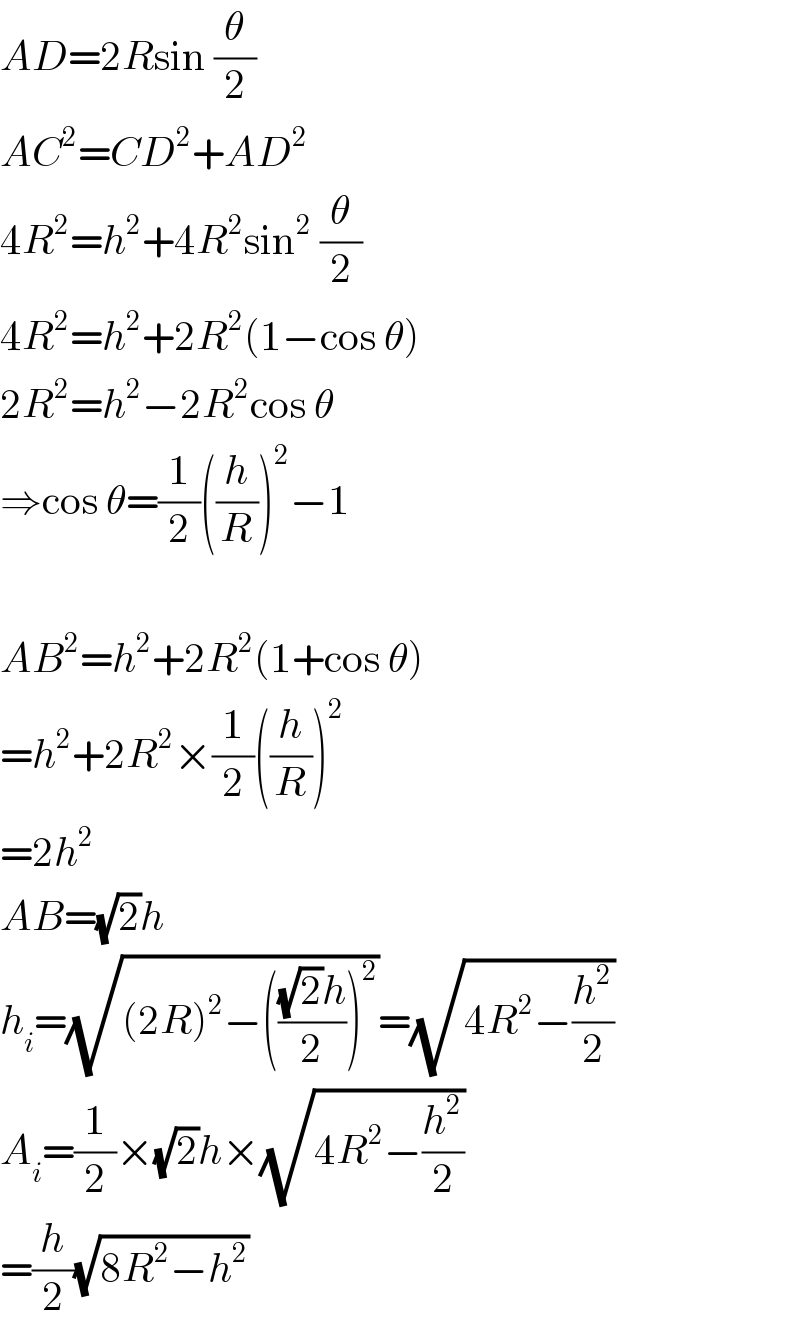
Question and Answers Forum
Question Number 25718 by ajfour last updated on 13/Dec/17

Commented by mrW1 last updated on 13/Dec/17
![Case 1: θ=(π/2) h_i =(√(h^2 +R^2 )) A_i =((2R×h_i )/2)=R(√(R^2 +h^2 )) Case 2: θ=cos^(−1) [(1/2)((h/R))^2 −1] ...](Q25733.png)
Commented by mrW1 last updated on 13/Dec/17

Commented by mrW1 last updated on 13/Dec/17
![There are always 2 possiblities: θ=(π/2) or cos^(−1) [(1/2)((h/R))^2 −1].](Q25731.png)
Commented by ajfour last updated on 13/Dec/17

Commented by ajfour last updated on 13/Dec/17

Commented by mrW1 last updated on 13/Dec/17

Commented by ajfour last updated on 13/Dec/17

Commented by ajfour last updated on 14/Dec/17

